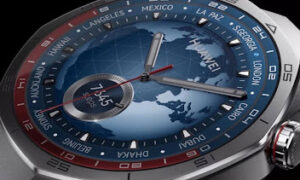In today’s fast-paced and technology-driven world, enhancing workplace productivity is a top priority for businesses and employees alike. One innovative solution that has gained prominence in recent years is wearable technology. Wearable devices have evolved beyond fitness trackers and smartwatches to offer a wide range of functionalities that can significantly boost productivity in the workplace. In this article, we will explore ten wearable devices that are designed to enhance productivity in various ways.
Introduction
Smartwatches
Smartwatches are perhaps the most well-known wearable devices, and they have proven their worth in the workplace. They offer features like email notifications, calendar alerts, and task reminders, allowing users to stay organized and on top of their work-related tasks. Additionally, some smartwatches offer voice assistants, which can be particularly useful for setting reminders, sending messages, or making quick notes.
Augmented Reality (AR) Glasses
AR glasses have made substantial strides in recent years, and they have great potential in the workplace. Employees in fields such as maintenance, logistics, and healthcare can benefit from hands-free access to vital information. AR glasses can provide real-time data and instructions, reducing the need to consult manuals or reference materials, thus increasing efficiency and reducing errors.
Wearable Scanners
For businesses that rely on inventory management or tracking assets, wearable scanners are a game-changer. These devices can be worn on the wrist or attached to a finger, making it easy for employees to scan barcodes, RFID tags, or QR codes. This reduces the time spent on manual data entry and minimizes errors.
Smart Helmets
In industries such as construction and manufacturing, safety is paramount. Smart helmets offer not only protection but also features like heads-up displays (HUDs) that provide essential information to workers. These displays can include schematics, safety guidelines, or real-time data, contributing to better decision-making and enhanced productivity.
Wearable Health Monitors
Employee well-being is a crucial factor in productivity. Wearable health monitors can track vital signs like heart rate, sleep patterns, and stress levels. By monitoring and analyzing this data, employees can make informed decisions about their health and adjust their work habits accordingly, potentially reducing sick days and boosting overall productivity.
Noise-Canceling Headphones
Open offices and noisy environments can be major distractions for employees. Noise-canceling headphones are a simple yet effective solution. They block out background noise, allowing employees to focus better on their tasks and increasing overall concentration and productivity.
Smart Clothing
Smart clothing incorporates sensors and technology directly into garments. These sensors can monitor posture, track physical activity, and even provide haptic feedback to guide users. In the workplace, smart clothing can help employees maintain better ergonomics, reduce fatigue, and stay active throughout the day.
Wearable Productivity Trackers
Wearable productivity trackers are designed explicitly for improving work efficiency. These devices monitor how employees spend their time, track task completion, and provide insights into areas where time can be optimized. By analyzing this data, employees and employers can identify areas for improvement and implement strategies to enhance productivity.
Gesture-Controlled Devices
Gesture-controlled devices, often worn as armbands or gloves, enable users to interact with computers or machinery through gestures and movements. This technology is particularly valuable in industries where precision is essential, such as design, engineering, or surgery. It reduces the need for physical interfaces and streamlines tasks, leading to increased productivity.
GPS-Enabled Wearables
For businesses with employees who work in the field, GPS-enabled wearables are a valuable asset. These devices can track the location of employees, monitor routes, and provide real-time updates on their progress. This not only enhances safety but also ensures that fieldwork is carried out efficiently.
Conclusion
Wearable devices are no longer limited to tracking steps or monitoring heart rate; they have evolved into powerful tools for enhancing workplace productivity. Whether it’s improving communication, streamlining tasks, ensuring safety, or promoting employee well-being, these ten wearable devices offer various ways to boost efficiency in the workplace. As technology continues to advance, we can expect even more innovative wearables that will redefine how we work and improve productivity across industries. Businesses that embrace these wearable technologies are likely to stay ahead in the competitive landscape and create a more productive and efficient work environment for their employees.



































